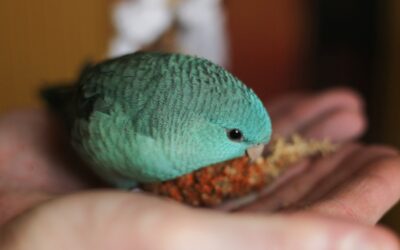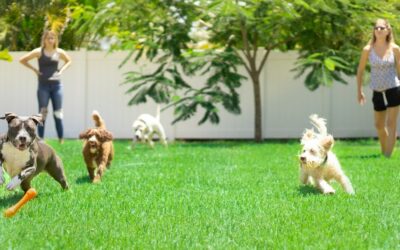Have you ever wondered why won’t my dog eat? One of the most frustrating experiences as a dog owner is when your furry friend refuses to eat. As pet parents, we all want our dogs to maintain a healthy appetite and enjoy their meals. However, if your dog suddenly loses interest in their food, it can be a major cause for concern. In this blog post, we’ll explore some of the common causes of why your dog won’t eat and provide some solutions to help them get back to their healthy diet.
Illness or Pain
A dog’s loss of appetite can be a sign of an underlying health issue or pain. Some common illnesses that can affect dogs’ eating habits include digestive problems, infections, and kidney disease. If your dog is experiencing symptoms like lethargy, vomiting, or diarrhea, it’s important to take them to the vet as soon as possible. Additionally, if your dog has dental problems or mouth pain from hunger as a result of teeth removal, it can make it difficult for them to eat.
Feeding Time Changes
Dogs thrive on routine, and any changes in the daily routine can cause stress and anxiety. If you’ve recently changed your dog’s feeding time or the location of their meals and food bowl, this could be the cause of their decreased appetite. Additionally, if your dog isn’t receiving enough exercise, they may not be hungry enough to eat. Consider providing more opportunities for your dog to play and run.
Aging
As dogs age, their appetite may decrease. This is normal and should not be a cause for concern. Certain breeds of older dogs might require fewer calories as they age and slow down, but this doesn’t mean they should lose interest in eating entirely. Talk to your vet if you’re unsure about how much food to give your aging dog, but it’s important to find the right balance between the amount of food and their energy level.
Emotional Changes
Dogs are highly sensitive creatures and can pick up on our emotions. If there have been changes in the household, such as a new baby, a move to a new home, or the loss of a family member, your dog might be feeling anxious or stressed. Much like pack animals, dogs like to eat with their family, so if their eating location has moved, they may stop eating. These changes and emotions can disrupt their appetite because they need some time to adjust.
Food Preferences
Just like humans, dogs have individual tastes and preferences for food. Sometimes, dogs get bored with their food or dislike a particular ingredient. For example, if your dog suddenly refuses to eat dry food, you may want to try wet food. Finding a food that your dog enjoys can take some experimentation. You may want to change the brand or specific flavor of the dog’s food, or incorporate more variety into their diet, such as boiled chicken or veggies. But it’s important to remember that a healthy balanced diet is essential.

Signs I Should Take My Dog to the Vet When They Are Not Eating
As pet owners, it’s normal to experience alarming symptoms in our dogs. One of the most common symptoms that can cause concern is when our dogs stop eating. A dog that suddenly stops eating for no reason could be trying to tell you that something is wrong, and it might be time to take them to see a vet. In this article, we will highlight some of the signs you should look out for that shows it’s time to take your dog to the vet when they stop eating.
Check For Any Physical Symptoms:
One of the first things you should do when you notice your dog has stopped eating is to do a thorough check for any physical symptoms. Check for swollen or discolored gums, diarrhea, vomiting, and other physical signs that might suggest infection or dental issues. This will help you explain to your vet exactly what’s going on with your dog.
Note Any Behavioral Changes:
If you see your dog not eating, and is also acting tired, lethargic or exhibiting any significant behavioral changes, it’s important to take these symptoms seriously. In some instances, this might indicate a serious underlying issue that requires medical attention.
Check For Food Allergies:
If you’ve recently introduced a new type of food to your dog’s diet, and you see your dog eating and they suddenly stop, it’s possible that your dog might have developed an allergy to that food. If this is the case, take your dog to the vet and discuss with your vet on the best course of action.
Examine Their Environment:
Sometimes, pets can stop eating when they are stressed or in an environment that’s uncomfortable for them. If your dog has stopped eating, try observing their behavior in their environment to see if something is making them uncomfortable. It’s also important to note if they’ve encountered anything toxic or harmful recently.
Changes In Appetite:
Sometimes a dog’s eating habits may change gradually. To determine if there is a problem with your dog, it’s important to keep an eye on their habits over a period of time. Tracking your dog’s eating habits can help you keep track of any abnormal changes that might require a trip to the vet.
Taking care of your dog can be a challenging but worthwhile experience. As a responsible pet owner, it’s important to know when to take necessary actions to protect your dog’s life. If your dog stops eating, it is always better to err on the side of caution and take them to the vet. By following the five steps above, you can take the necessary steps to help ensure that your dog remains healthy and happy. Ensure you discuss with your vet on the best path to take regarding the care of your furry friend.

Finding the Right Food for My Dog: A Guide to Ensure Their Health and Happiness
As pet owners, we all want the best for our furry friends, and their health and happiness are of utmost importance. One of the critical factors in ensuring their well-being is feeding them the right food. With so many choices available in the market, finding the right food for your dog can be a daunting task. In this blog, we will help you navigate through the various factors you must consider before settling on one.
Understand Your Dog’s Nutritional Needs:
The first step towards finding the right food for your dog is understanding their nutritional needs. Dogs require a balanced diet consisting of proteins, carbohydrates, fibers, vitamins, and minerals. The ratio of these nutrients may differ based on the dog’s breed, size, age, and health conditions. Consult your veterinarian to find out the specific nutritional requirements of your dog and follow them while selecting the food.
Choose the Right Type of Food:
Once you know your dog’s nutritional requirements, the next step is to choose the type of food that suits them. There are mainly three types of food – dry kibble, canned food, and raw food. Dry kibble is convenient and cost-effective but may lack moisture. Wet food is more palatable and moist but may be pricier. Raw food is believed to be the most natural and nutritious but may require more effort in preparation. Consider your dog’s preference, convenience, and budget while selecting the type of food. If needed, add warm water to your dog’s dry food and mix it up to see if they prefer the wet food.
Read the Labels Carefully:
Just like reading food labels is essential for our health, reading dog food labels is crucial for their well-being. The ingredients listed on the label should indicate the source and quality of proteins and carbohydrates used. Avoid foods that contain fillers, artificial flavors, and colors. Look for high-quality ingredients such as meat, fish, fruits, and vegetables. Also, ensure that the food meets AAFCO standards, which provide guidelines for the minimum nutritional requirements of dogs.
Consider Your Dog’s Special Needs:
Some dogs may have special needs that require specific types of food. For example, dogs with allergies may require food with limited ingredients or novel proteins. Senior dogs may require food that is easy to digest and does not overburden their aging digestive system. Likewise, puppies may require special food that aids their growth and development. Consult with your veterinarian to determine if your dog has any special dietary needs.
Monitor Your Dog’s Health:
After you have chosen the right food for your dog, it is essential to monitor their health and well-being. Look for any symptoms such as lethargy, vomiting, diarrhea, or itchy skin that may indicate an adverse reaction to the food. Monitor their weight, appetite, and overall energy levels. Make adjustments to the food if required, with the guidance of your veterinarian. It is also recommended to not give your dog human food.
Feeding the right food to your dog is crucial for their health and happiness. Understand their nutritional requirements, choose the right type of food, read the labels carefully, consider their special needs, and monitor their health while selecting the food. With a little effort and guidance from your veterinarian, you can ensure that your furry friend stays healthy and happy for a long time!
In Conclusion:
A decrease in your dog’s appetite can be caused by a variety of factors ranging from an underlying health condition to emotional changes, but it’s important to pay attention to any dietary changes in your furry friend. If you notice any consistent changes in their eating habits, it’s important to talk to your vet. With proper care and the right solutions, you can help your furry friend regain their healthy appetite and enjoy their meals once again.

Kate’s K9 Pet Care
At Kate’s K9 Pet Care, we are here to keep your pup company if you need to leave your house for a while, or if your dog needs to be taken to the vet, or if you need your dog’s food delivered to you! We offer a range of other services as well!







